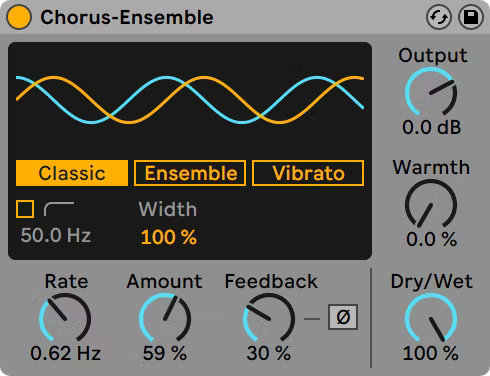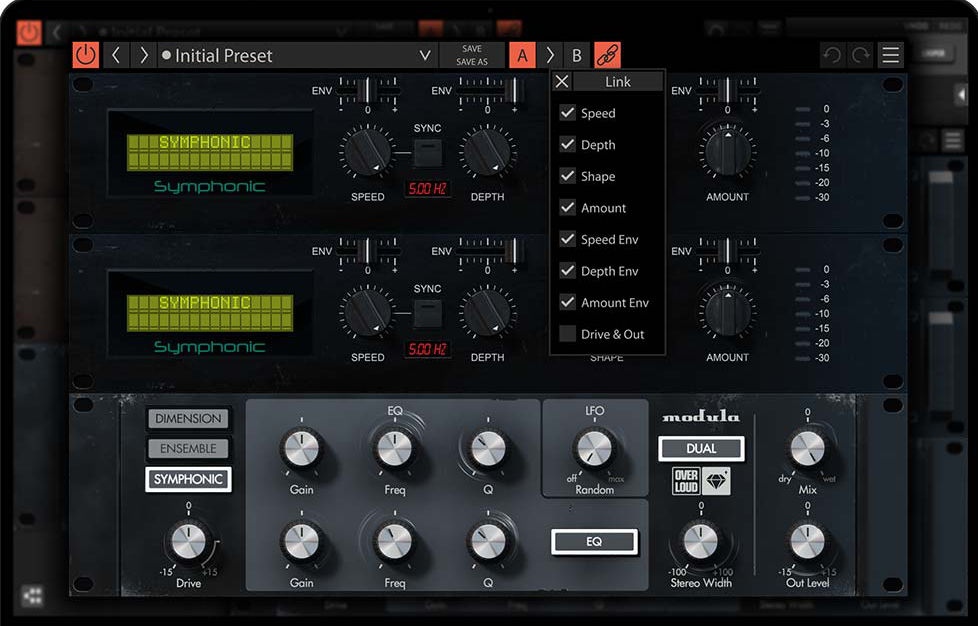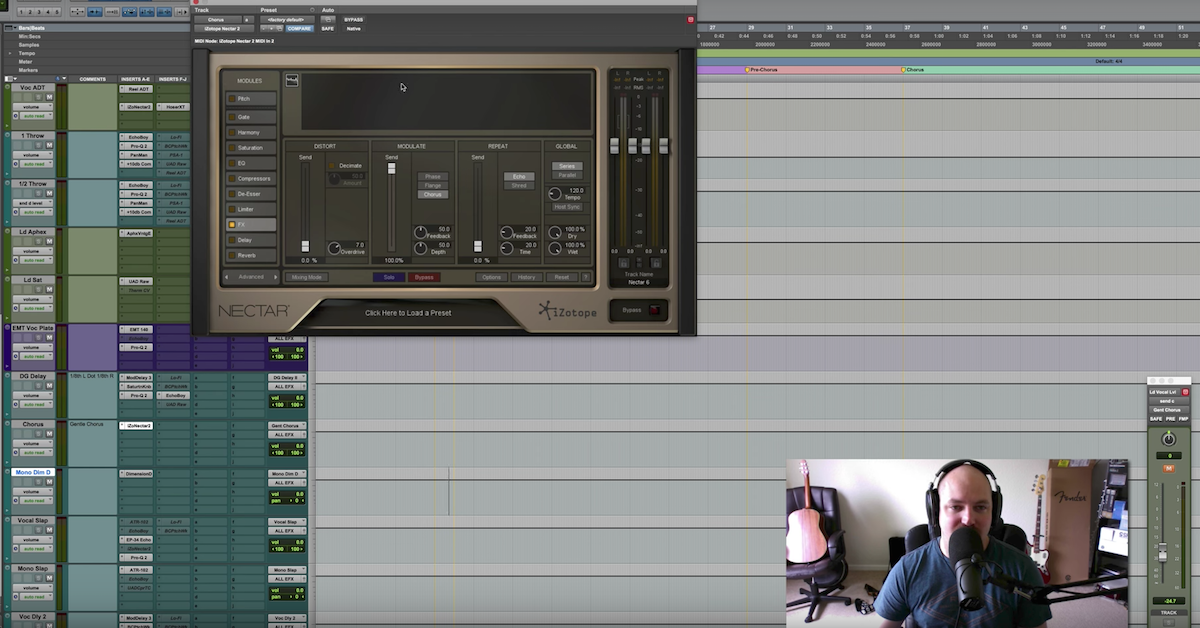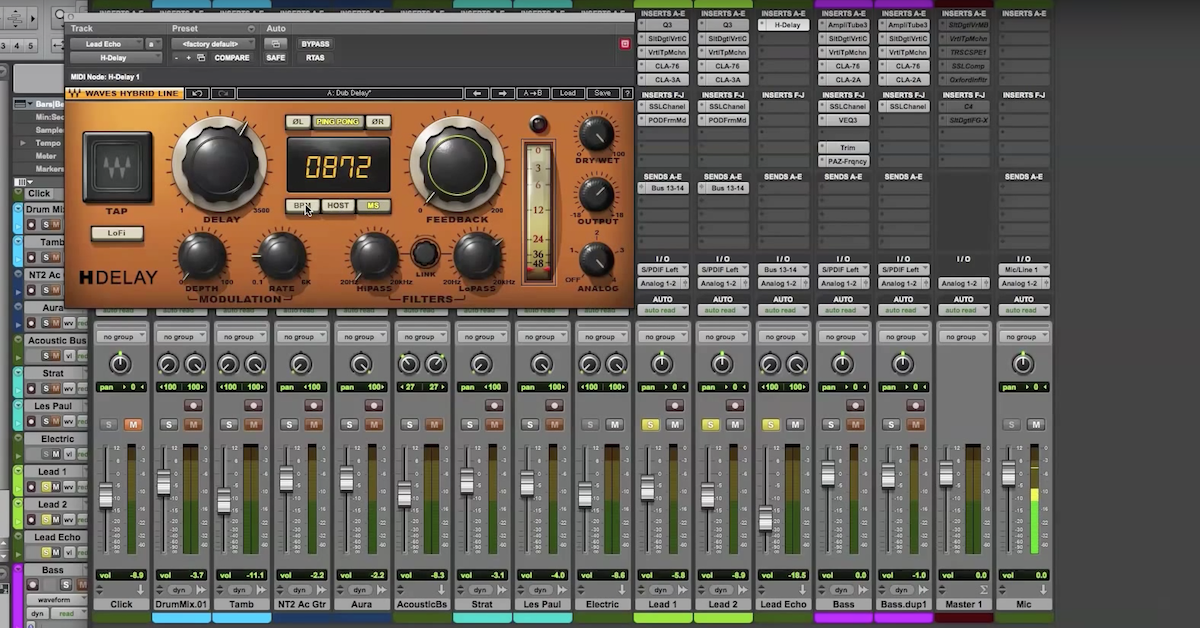15 Best Chorus Effect Plugins (+ Mix Tips)
Article Content
It’s arguable that the first chorus effect was found within Hammond Organs in the 1930s. Hammond’s BC organ featured a “chorus tone generator,” which created a second note that was slightly out of tune with the first. This generated a sound that was perceived to be richer, fuller and with more depth.
Another ingenious use of this type of effect, although created in a much different way, was by engineers at Abbey Road Studios on recordings by (you guessed it) The Beatles. Displeased with the tedium of having to overdub his vocals, John Lennon repeatedly asked Ken Townsend if he could come up with a technical alternative. Townsend employed a second tape machine which played back the original recording slightly out of sync with the first, while also using an oscillator to alter the playback speed of the second machine, resulting in a chorus-like effect. The effect was dubbed Artificial Double Tracking, or ADT. The Beatles and their brilliant engineering team utilized this technique extensively on Revolver and on many subsequent albums. Check out this wonderful resource on ADT directly from the Abbey Road Website.
Other organs and synthesizers included a similar effect and the chorus sound remained a somewhat commonly used sonic texture throughout the late ’60s and early ’70s. In 1975 Roland released the Jazz Chorus amplifier which had the effect built in. The solid-state Jazz Chorus featured a relatively low cost compared to tube amplifiers by rivals Fender and Marshall, and it became a favorite among guitarists playing a wide range of genres ranging from funk, to post punk and even metal. In 1976, Boss released the famed CE-1 (Chorus Ensemble) pedal and the effect became accessible to even more guitar players. The CE-1 featured a high and low input switch and knobs for level control, chorus intensity and vibrato depth & rate.
The late ’70s and ’80s saw the development of numerous studio-grade chorus rack units including the Roland Dimension D, Yamaha SPX90, T.C. Electronic 1210 and plenty of others. Chorus wasn’t just for organists and guitar players anymore, it had become a sought after sound and found its place within the world’s greatest studios.
Chorus was subsequently used on many hit records, and was not limited to one particular genre or instrument. The Roland JC-120 amplifier was used on Prince’s “Purple Rain,” Kurt Cobain employed the EHX Small Clone to achieve the watery effect on “Come As You Are,” and funk guitar legend Nile Rodgers occasionally utilizes an Ibanez CS9 to embellish his shimmery clean tone.
Today, there’s an abundance of high quality chorus pedal effects available to players. I use a Julianna Deluxe Chorus/Vibrato from the Oklahoma-based company Walrus Audio. Julianna is an all analog, digital LFO (low frequency oscillator), stereo chorus/vibrato with features that you simply wouldn’t find on the more basic chorus pedals of yesteryear. There’s a tap tempo function if I want to synchronize the effect with the song I’m playing, a “drift” function which will gently speed up and slow down the LFO rate and a random LFO shape in addition to sine & triangle. Julianna covers a super-wide range of tones, from a gorgeous slow chorusing effect to a wild warble — and everything in between. Because it’s stereo, it’s also especially useful for reamping tracks. I’ll take everything from vocals, to synthesizers, and even reverbs — send them out of my DAW, process them with Julianna, and record them back into the original session. For what it’s worth, the original packaging and enclosure are totally beautiful. Walrus Audio makes top-notch effects pedals that include reverbs, delays, distortions and more.
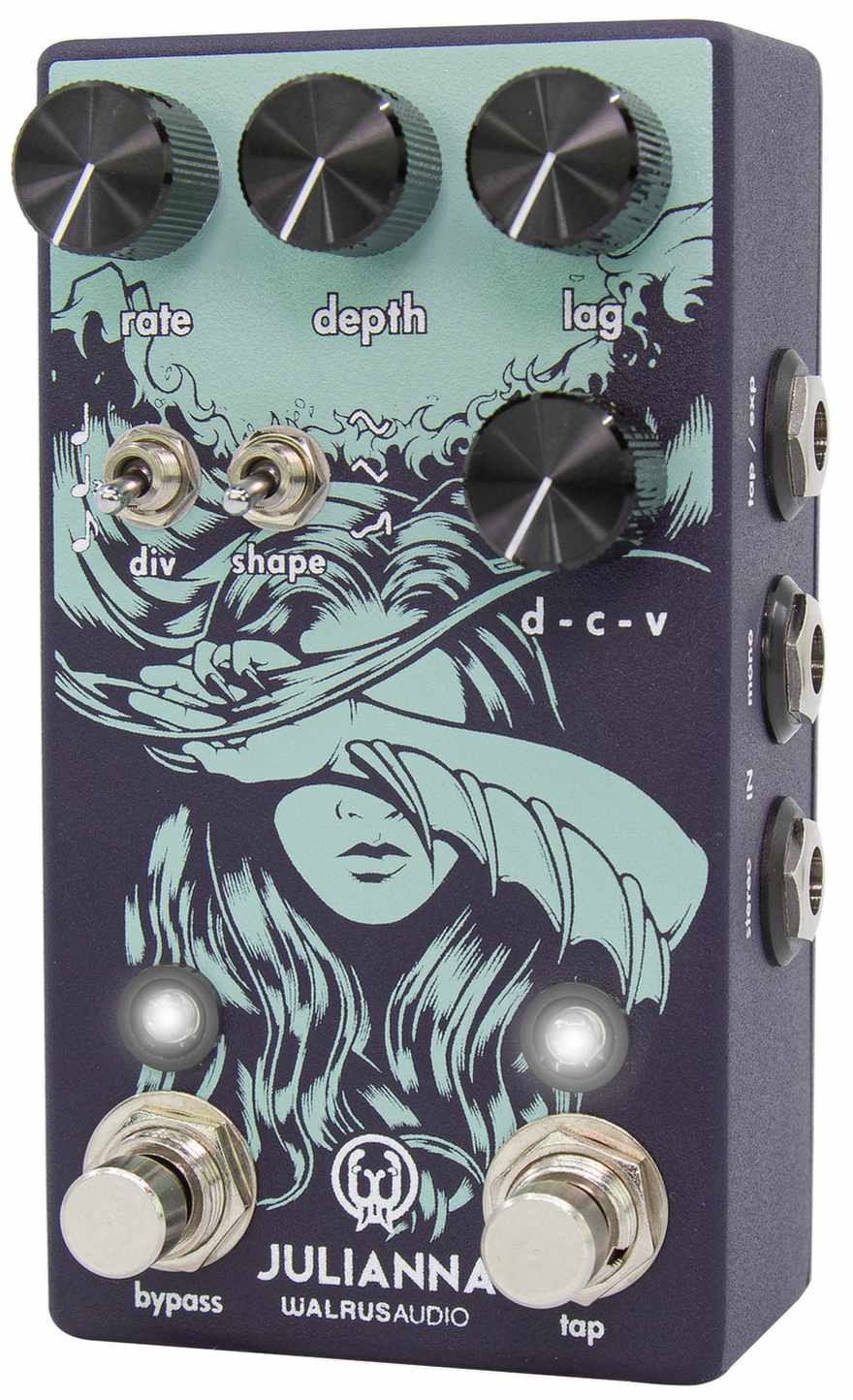
Walrus Audio Julianna Deluxe Chorus/Vibrato
Check out some sound clips of the Julianna in action:
^ Clean guitar, no chorus ^
^ Clean guitar with Julianna chorus — subtle ^
^ Clean guitar with Julianna — wacky vibrato ^
^ Clean guitar with Julianna chorus — full mix ^
^ Lead guitar — no chorus ^
^ Lead guitar with Julianna — chorus/vibrato blend ^
^ Lead guitar with Julianna — full mix ^
For those of you who produce and mix music within a DAW, there are tons of great plugins that allow you to unleash chorus in all its glory; here are a few of my favorite chorus plugins and how I use them during recording, production and mixing:
1. Baby Audio Magic Switch
I figured we’d start with a plugin that is free for all to enjoy, and Magic Switch from Baby Audio is just that — so go download it at no charge ASAP. Magic Switch couldn’t be simpler, featuring only an on/off button and a mix slider. It’s loosely based off the chorus found within a Juno 60 synthesizer, and it has a pleasantly dark and detuned character. Baby Audio makes a bunch of beautifully designed, sweet sounding plugins, and Magic Switch is actually lifted from their Super VHS plugin. Check it out if you want to add noise, warble and reverb to your tracks.
Mix Tip
Try adding some depth and tasteful modulation to your reverbs and delays by placing Magic Switch directly after them. Keep the effect subtle by dialing back the mix amount to taste.
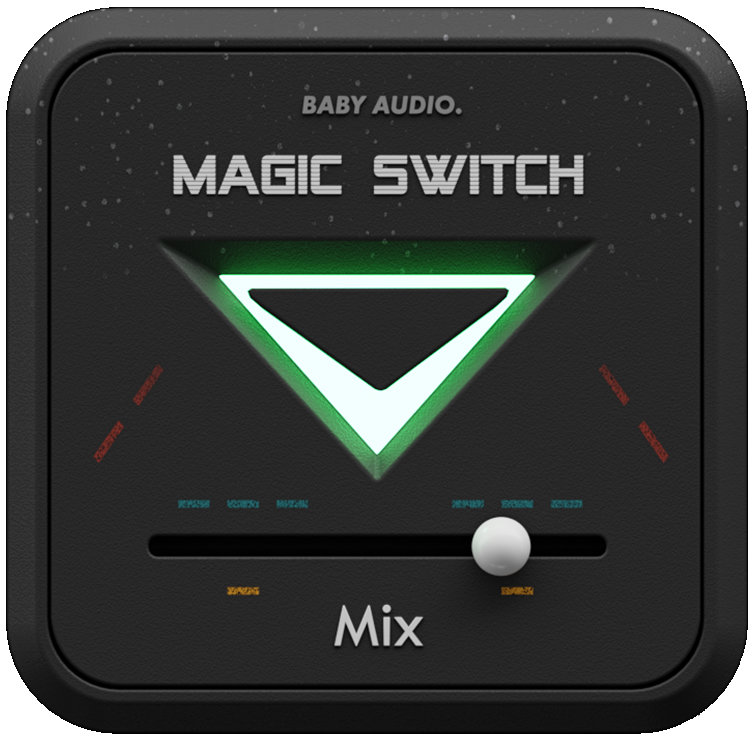
2. Universal Audio Brigade Chorus
This plugin is based on the OG Boss CE-1 pedal that brought the chorus effect to an entire generation of guitarists. Universal Audio has faithfully emulated the bucket brigade circuit of this unit, which gradually degrades the original signal in a warm and musical fashion. The vintage Boss pedals, as fun as they are, currently cost around $750 per unit used, so I’m grateful that UAD offers an affordable alternative — with the added benefit that it can be used dozens of times in a singular session.
Mix Tip
While the Brigade is undoubtedly an effective tool to use when mixing, I also enjoy placing it as an insert within the Universal Audio Console software, followed by one of Universal Audio’s numerous excellent amp emulations from companies including Marshall, Fender and others. Then I’ll play my guitar through this signal chain, just as I would any actual chorus pedal and amp combination, lastly recording into the DAW.
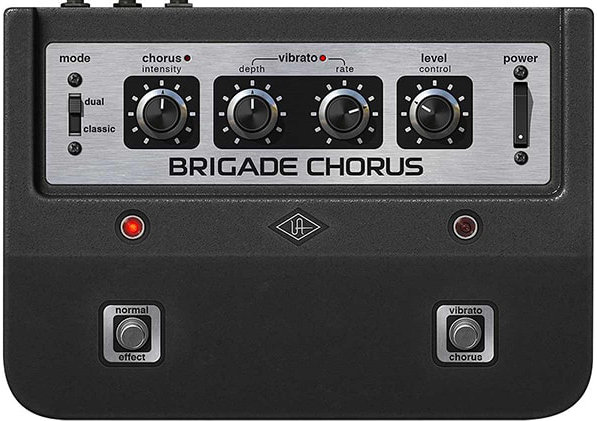
3. Soundtoys EchoBoy
If you own EchoBoy, you might share my sentiment that it’s the greatest delay plugin of all time. You might not know that it can function as a more than serviceable chorus as well. Go under the hood to find several style presets that include digital chorus, analog chorus and even one that emulates the CE-1. Plugins from Soundtoys never cease to amaze me with their musicality, versatility and overall ease of use.
Mix Tip
What makes EchoBoy so great for this application is the same feature set that makes it such a versatile delay plugin: the dry wet blend can be used to dial the effect back, the low and high cut can sculpt the timbre of your chorus, and the input and saturation controls can be pushed to give your track a bit of extra crunch.
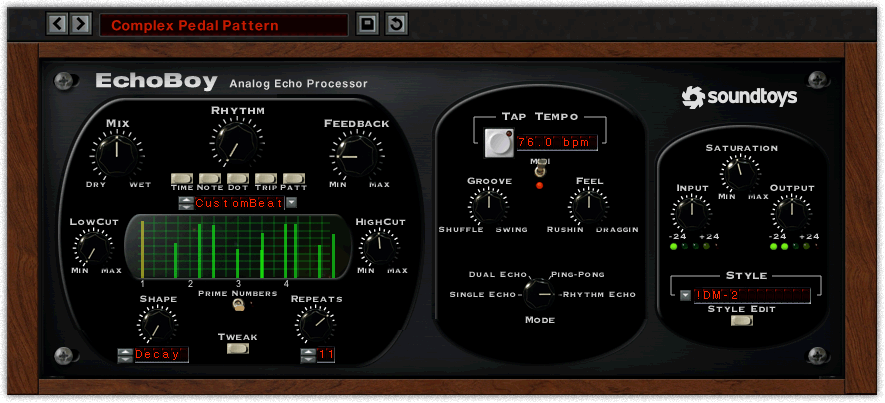
4. Native Instruments Choral
Available as part of the Mod Pack effects series from Native Instruments, Choral features four distinct modes, each with their own unique color and character. Universal mode is a clean-sounding, modern digital chorus effect. Synth mode is reminiscent of the lush “unison” function found within a range of popular synthesizers since the 1980s. Ensemble mode emulates the rich bucket brigade chorus of the Solina String Ensemble synthesizer. Dimension brings the width of the Roland Dimension D rack unit into the convenience of your DAW.
Mix Tip
Controls on Choral include width, rate, amount, voices (between 1-3), mix feedback and delay. Feedback (which features a “scatter” mode) is the really fascinating control on this plugin, allowing the user to create an otherworldly reverb-like effect that drastically modulates over time depending on how aggressive the other controls are set. It can sound truly monstrous. Check out this sound clip of me gradually bringing the effect in:
^ Clean guitar with Native Instruments Choral plugin ^
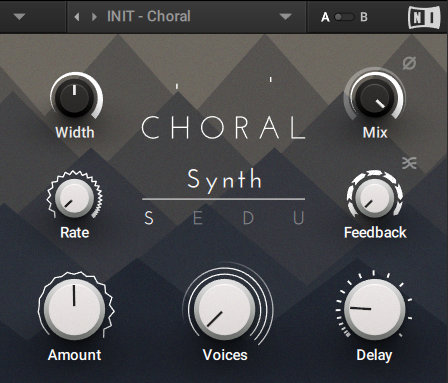
5. Valhalla Space Modulator
Another completely free plugin from one of my favorite software developers, Valhalla marketed this plugin as their take on flanging — but it can absolutely function as a chorus effect too. The simple and colorful user interface features controls for mix, rate, depth, feedback and manual (which adds a fixed pre-delay to the modulated signal). There are also 11 separate modes which allow the user to further customize how they want to modulate the signal. Be sure to visit the Valhalla DSP website and scoop up this free plugin.
Mix Tip
For chorusing duties, my favorite mode is the doubler, which introduces 2 detuned voices with a wide stereo spread into the signal. Try it on backup vocals, guitars, synths or anything that can benefit from some added width.
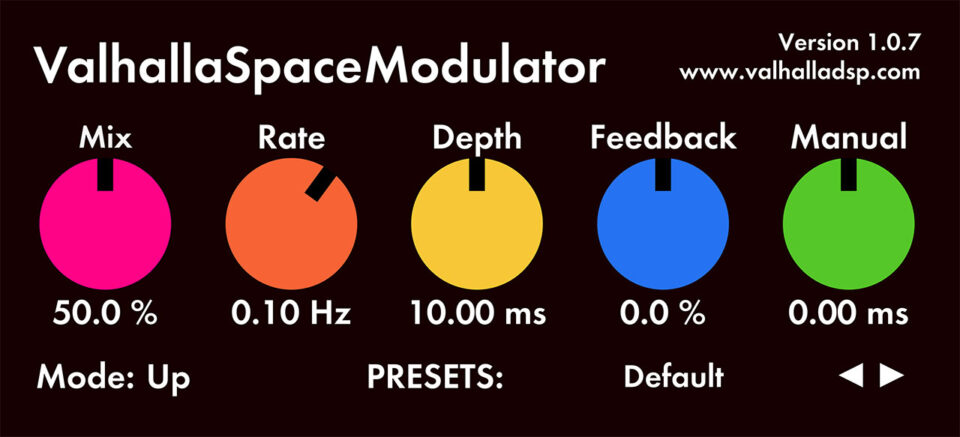
6. UAD Studio D
The Roland Dimension D chorus was introduced in 1979, and over time it became well known for adding depth and a pleasing, gentle modulation to everything from vocals, to guitars, to percussion and beyond. It became a “secret weapon” for producer extraordinaire Brian Eno, and even guitar virtuoso Stevie Ray Vaughan was known for using this legendary rack unit. Whereas most bucket brigade circuits at the time operated useing 512 or fewer delay stages, the Roland Chorus featured an exceptional 1024 stages per channel.
Universal Audio’s faithful emulation of the Dimension D, dubbed “Studio D,” grants engineers access to the subtle magic of the original hardware, which features only 5 buttons — 4 of which represent different levels of intensity, and one off switch. This obviously makes the plugin incredibly easy to use, and often times I find myself finding the exact sound I’m after within mere seconds of inserting Studio D on my tracks.
Mix Tip
The 4 buttons can be used in any combination to generate a variety of chorusing flavors, or you can take advantage of “all buttons in” mode to generate a uniquely dreamy modulation effect.

7. Plugin Alliance A/DA STD-1 Stereo Tapped Delay
Chorusing is just one feather among many in the cap of the A/DA STD-1 Stereo Tapped Delay, which emulates the character of a classic hardware unit, with some supremely useful modern features thrown in for good measure. The STD-1 also functions as a delay, a doubler of sorts and even as a crude reverb. What set this unit apart was its unique tap system — six separate delays on tap to be specific, and users can set the delay time and each additional tap will be adjusted to an offsetting value. Moreover, each tap has its own stereo assignment, making it an excellent processor for wide, rich vocal doubling.
Taps aside, you can crank the feedback control for an effect that sounds more like a “regenerator” than it does a delay. To keep the feedback from making too much of a fuss, there’s an internal soft peak limiter. There’s also a dual LFO circuit with an adjust sweep rate for creating expressive modulations.
Mix Tip
The versatile STD-1 can add different characters to many different types of signals, but give it a go as a chorus and delay on electric guitar, both lead and rhythm, as the original hardware was used by well known guitarists within multiple genres spanning jazz, blues and even metal.

8. Kilohearts Chorus and Ensemble
These two separate effects from Swedish software makers Kilohearts don’t sport the same glossy interfaces and sonic characteristics as classic hardware units, and that’s not a problem. The controls are easy to locate, simple to operate and the sound quality is superb.
Chorus features controls for delay, spread, taps (2/3), depth, rate and mix. The spread knob is a personal favorite, and I enjoy using it to widen all types of sources.
Ensemble, similar to Chorus, creates and plays back delayed replicas of a sound. But additionally, it modulates the phase of each voice to prevent the metallic flanging of near-identical waves, resulting in a more natural and pleasing overall sound. It features controls for number of voices, detune, spread, mix as well as a motion selector for choosing the shape of the modulation.
Mix Tip
Add movement, depth, and stereo width to your time-based effects by popping an instance of Chorus or Ensemble directly after them. While some reverbs and delays do feature modulation controls, others that don’t could potentially benefit from a touch of the subtle pitch and spatial variations that these effects offer.
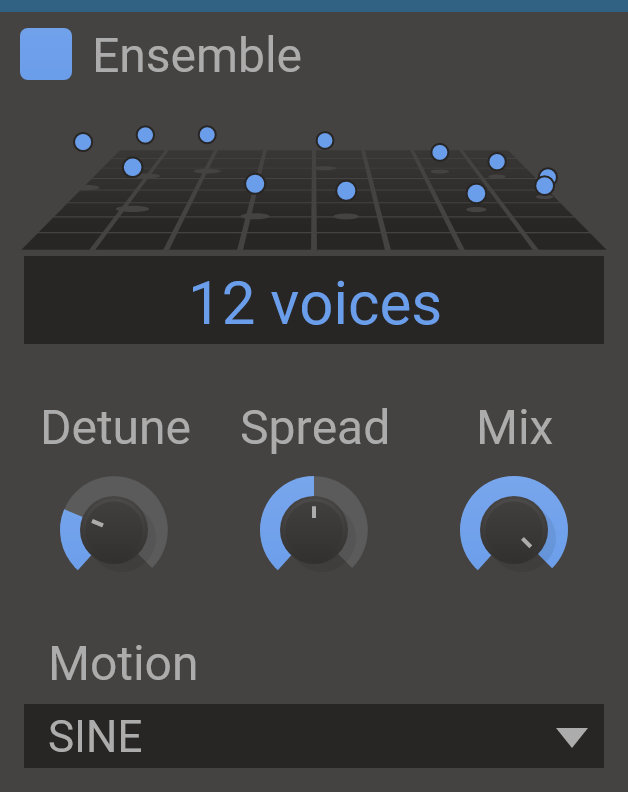
9. D16 Group Syntorus 2
Rather than creating an emulation of one specific hardware unit, D16 Group studied a multitude of classic chorus units, including the effects within Solina String Ensemble, Elka Synthex and Roland Juno-106 synthesizers when creating Syntorus 2.
Designed to look like a hefty rack unit, Syntorus has an impressive feature set including:
- Three separate delay lines that can be used to generate a fuller, richer, deeper chorus effect.
- An analog BBD button that adds more warmth and character to the chorus effect. Without this option turned on Syntorus is more clean, so make your decision based on the needs of the mix.
- Highly tweakable filter and tremolo effects.
- Three LFO generators, which can be routed to the delay lines in a number of switchable configurations.
Mix Tip
The filter and tremolo effects can be used to create a wide variety of sonic textures including an impressive Leslie speaker sound. Use this beautifully bizarre effect on everything from organs, to guitars and even vocals.

10. Sound Particles Density
Sound Particles has produced some of the most forward-thinking and wildly creative software for use within sound design for film and television, gaming, immersive audio and music production. Their latest tool, Density, takes the concept of chorusing and takes it into three dimensions, working within the 5.1, 7.1, binaural, ambisonics and Dolby Atmos formats.
The plugin can be used in a simple manner, or it can become a tweaker’s delight depending on which mode is chosen:
- Basic mode is best for the quick application of chorus, turning solo performances into ensembles using minimal controls.
- Detune mode creates the impression of a variety of layers using granular technology for which Sound Particles has become renowned.
- Advanced mode’s controls allow the user to generate thick, dense, layered sounds that go far beyond typical chorusing.
- Pitch mode allows users to create groups of multiple voices, enabling control over pitch, number of voices and gain. This mode can even create harmonies, allowing users to create a lush, beautiful choir, all starting from a singular source.
Mix Tip
Assign two parameters to the XY pad, and then play in automation using your mouse or a MIDI controller for a more expressive application of the effect.
Additionally, this plugin features a randomization tool, which I love to use for exploring new sounds when I’ve found myself at bit of a creative standstill.
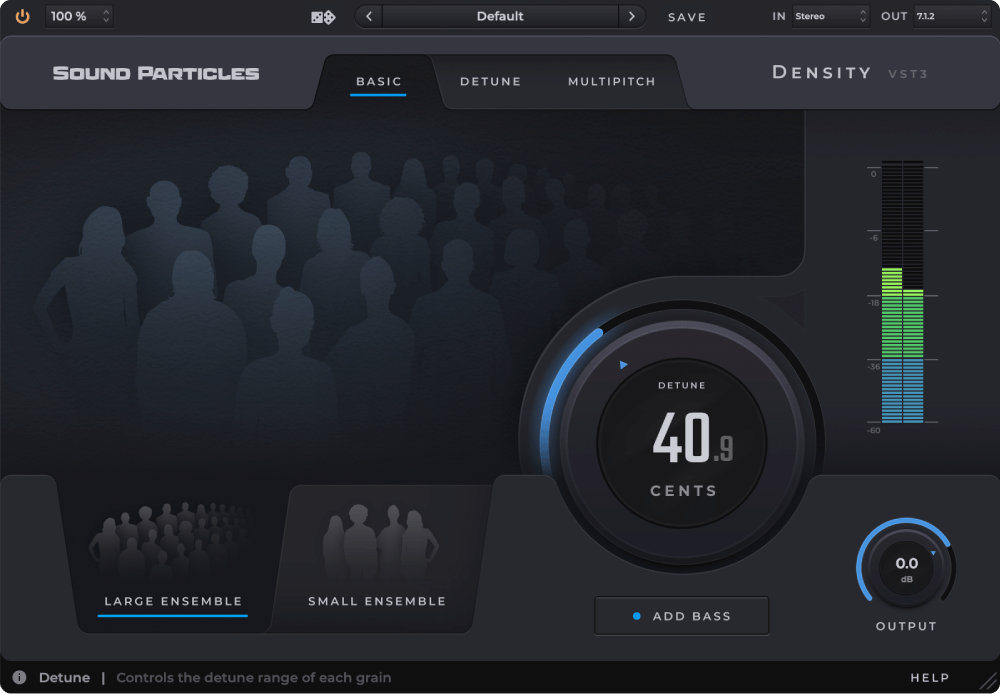
11. Overloud Modula
Hailing from Modena, Italy, Overloud is well known for making TH-U, a suite of outstanding guitar amp emulation and processing software. Additionally, they offer a wide variety of plugins for music production, mixing and mastering. Modula is a 3-in-1 chorusing effect, containing emulations of 3 classic hardware units: the Roland Dimension D, Solina Ensemble and Yamaha SPX90, each with their own distinct chorusing flavor.
While this versatile trio of choruses can add lush width to any number of sources, the Dimension D almost always shines on vocals, the Solina excels on ambient synth pads and more legato-like elements, and the SPX90 was one of the go-to choruses for guitarists in the 1990’s. Modula helps users go beyond the original hardware with built in saturation, EQ and stereo width controls.
Mix Tip
Unique to this plugin is the ability to dynamically control the parameters of these plugins based on the input envelope. Modulation speed can increase due to transients, or the effect can be brought down during louder passages. It takes some experimentation and it’s highly contextual, but envelope control is highly expressive, and it’s great way to have modulation “breathe” along with the tracks.
12. TAL Chorus LX
The chorus module found within Roland’s Juno-60 synthesizer became such a sought after sound that musicians found ways to hack into the synth, running external audio through the rich, lively chorus effect. The aesthetic is so in demand that TC Electronic has even made a pedal version of this wonderful, warbly modulator.
Swiss plugin designers TAL have released a faithful reproduction of the Juno-60 chorus, and here’s the best part: it’s free. Decidedly utilitarian, the Chorus LX features controls for volume, dry/wet, stereo width as well as push buttons to select either or both of the chorus types.
Mix Tip
Chorus setting 1 is more subtle, adding tasteful, slow chorusing and a touch of stereo width. Setting 2 is more pronounced: the effect has more depth and modulates faster. Get comfortable with the particularities of both settings on the Chorus LX and you’ll find it’s is a quick and easy way to add a variety of modulation effects to everything from vocals, synths, guitars and beyond.
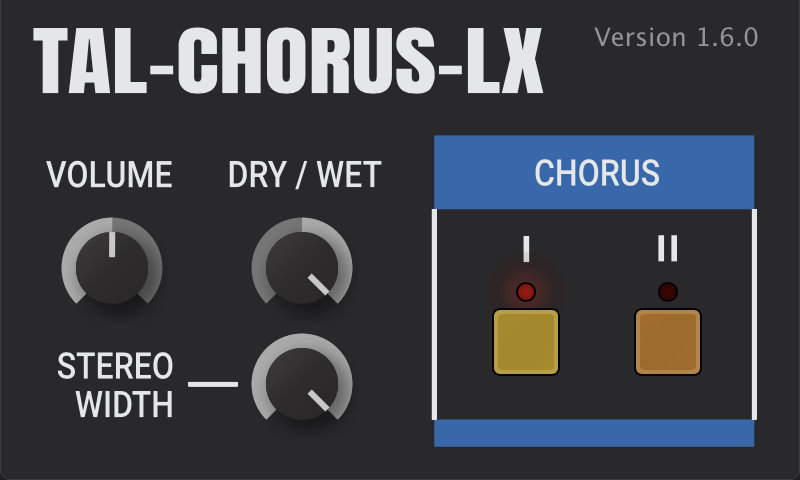
13. Dytronics Tri-Stereo Chorus
Featuring three channels of glorious, swirling chorus, the hardware version of the Tri-Stereo was one of the most sought after units for chorusing effects by guitarists in the 80s and 90s. Spend a little time with the plugin, developed by Softube for the UAD platform, and you’ll hear why.
The secret to this coveted modulation effect is built around three separate (and manually tweakable) bucket-brigade delay channels — one each for left, center and right. Each can be swept back and forth by a dedicated LFO, which can be mixed with the dry signal to create the unit’s lush, shimmering sound.
Mix Tip
The Dytronics’ straightforward but substantial LFO section boasts two modes (preset and manual), which can be used independently or in parallel — each with its own LFO waveform and character. Preset mode offers more sophisticated, shimmering tones, while manual provides dense, classic chorus textures. Combine them together to create your own lush chorusing on guitars, synths, vocals and more.

14. Valhalla ÜberMod
The GUI of ÜberMod is similar to Valhalla’s other wonderful plugins — flat-looking knobs and faders free of the shadows, texture, digital dust and scratches that have become en vogue over the past decade of software design. The aesthetic simplicity might be deceiving, as ÜberMod is among the most feature laden and versatile modulation plugins available.
To start, it goes far beyond chorusing, capable of swirling feedback effects, haunting reverb tails and even expressive gated sounds. At the heart of ÜberMod is 9 different modes including the simpler 2TapChorus for more traditional and familiar chorus sounds. If that’s not your vibe, try the absolutely bonkers 32Tap which includes 16 taps each for left/right. It’s a mode that lends itself to aggressive echoing and pseudo-reverb effects.
Sliders for mix, depth, width, delay and feedback, as well as a series of controls controls for modulation, taps, diffusion, EQ, drive and warp make ÜberMod an adventure for anyone wanting to go beyond the limitations of traditional chorusing. The story behind the design of the ÜberMod is (almost) as interesting as some of the sounds you can cook up with this beastly plugin.
Mix Tip
I mean, this is kinda tough to choose just one, because what can’t you do with this thing? To learn about the transformative power of ÜberMod, I suggest placing it on a singular sample or loop. It could be a vocal line, percussion loop or even a one-shot snare. Try to generate something entirely different by turning up the feedback and going to town with the many different controls. You may be pleasantly surprised where you end up.
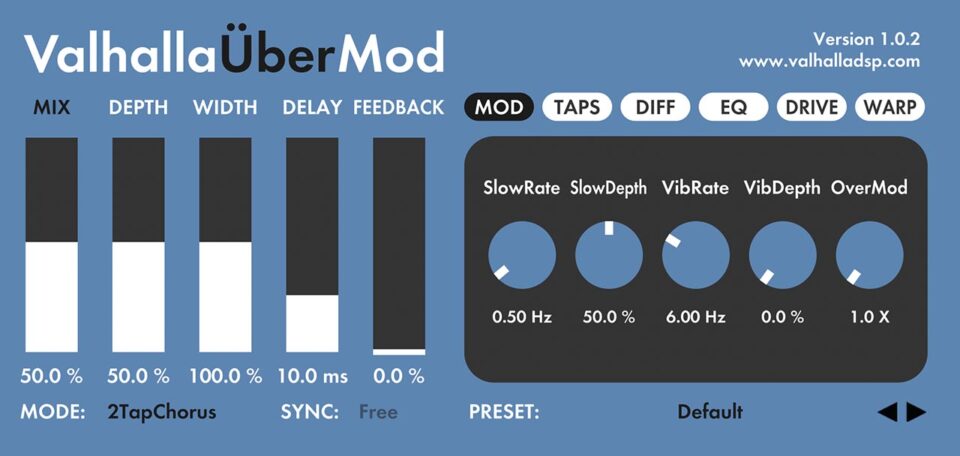
15. Whatever Stock Chorus Plugin Your DAW Comes With
While they may not have the character, certain features and familiar sound qualities as chorus plugins that emulate classic analog gear, your stock DAW choruses should be more than serviceable if you need to add some richness and depth to a signal. The Logic Pro Chorus sounds solid, even if it only features four controls: rate, intensity, mix and D-mode, which, according to the Logic manual, adds “a spatial filtering effect, emulating a well-known vintage processor.” Ableton’s take on the effect, updated for Live 11 and renamed as “Chorus-Ensemble,” expanded its capabilities beyond the previous version, and is actually quite the versatile processor for adding thickness and movement to a sound. It features three separate modes: classic, ensemble and vibrato, as well as a slew of useful controls that allow you to fine tune the character of your chorused signal.
Mix Tip
The LFO effect in Live is a game changer, allowing users to map the speed and depth of a low frequency oscillator to virtually any parameter found within Live’s already impressive stock plugin set. Introduce more texture to your tracks by adding an LFO (or several) and modulating certain parameters of your chorus.
